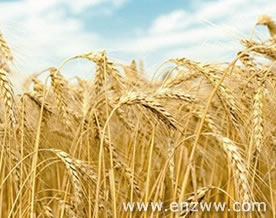changing china Impact of Climate Change on China
Impact of Climate Change on China changing china
China is one of the countries most susceptible to the adverse effects of climate change, mainly in the fields of agriculture, livestock breeding, forestry, natural ecosystems, water resources, and coastal zones.
Impact on Agriculture and Livestock Breeding
Climate change has already produced visible adverse effects on China's agriculture and livestock-raising sectors, manifested by in-creased instability in agricultural production, severe damages to crops and livestock breeding caused by drought and high temperatures in some parts of the country, aggravated spring freeze injury to early-budding crops due to climate warming, decline in the output and quality of grasslands, and augmented losses caused by meteorological disasters.
The impact of future climate change on agriculture and livestock breeding will still be mainly adverse. It is likely there will be a drop in the yield of the three major crops — wheat, paddy rice and corn; changes in the agricultural production layout and structure; accelerated decomposition of organic elements in the soil; enlarged scope of crop diseases and insect pests; accelerated potential desertification trend of grasslands; rising frequency of natural fire disasters; sagging livestock production and reproductive ability; and growing risk of livestock epidemics.
Impact on Forestry and Other Natural Ecosystems
The impact of climate change on China's forestry and other natural ecosystems are mainly manifested in the following aspects: the north-ward shift of the northern boundaries of eastern subtropical and temperature zones and early phenophase; upward shift of the lower boundaries of forest belts in some areas; elevation of lower line of highland permafrost and decreased area of permafrost; rising frequency of animal and plant diseases and insect pests with marked changes in the distribution of regions; reduced area and overall shrinking trend of glaciers in northwestern China; and threat to the oasis ecosystem posed by accelerated melting of glaciers and snow cover.
Future climate change will further increase the fragility of ecosystems, diminish the distribution areas of main afforestation and rare tree species, enlarge the outbreak scope of forest diseases and insect pests, and increase the frequency of forest fires and fire-vulnerable areas, shrink inland lakes and cause the decrease and functional degeneration of wetland resources, speed up the reduction of the area of glaciers and permafrost, and significantly alter the spatial distribution pattern of permafrost on the Qinghai-Tibet Plateau, and damage bio-diversity.
Impact on Water Resources
Climate change has already caused changes in the distribution of water resources all over China. Over the past two decades, the gross amount of water resources of the Yellow, Huaihe, Haihe and Liaohe rivers in northern China has been visibly reduced, whilst that of rivers in southern China has slightly increased. Floods happen more frequently, droughts get worse, and extreme climate phenomena show a conspicuous rise.
It is predicted that future climate change will have a great impact on the temporal and spatial distribution of water resources in the following ways: augmenting annual and inter-annual changes and boosting the occurrence of extreme natural disasters, including flood and drought. In particular, accelerated melting of glaciers in western China owing to climate warming will further lessen the area of glaciers and glacier ice reserves, thus having significant impacts on rivers and run-offs with sources in glacier melt water. Climate warming will possibly reinforce the drought trend in northern China, and intensify water scarcity and contradiction between water supply and demand.
Impact on Coastal Zones
The past 30 years have witnessed in China an accelerating trend of sea level rise, which has caused seawater intrusion, soil salinization and coastal erosion, damaged the typical marine ecosystems of coastal wetlands, mangrove swamps and coral reefs, and diminished the ser-vice functions and bio-diversity of coastal zones. Sea temperature rise and seawater acidification resulting from climate change have given rise to a lack of oxygen in some maritime areas, the degradation of marine fishing resources and the survival of rare and endangered species.
It is predicted that the sea level in the coastal zones of China will continue to rise. Sea level rise will undermine the capacity of public drainage facilities in coastal cities, and impair the functions of harbors.
Impact on Society, Economy and Other Fields
Climate change will also produce far-reaching impacts on society, economy and other fields, and cause huge losses to the national economy. Corresponding economic and social costs will have to be paid for addressing climate change. In addition, there will be increased chances of disease occurrence and spread, ensuing dangers to human health, rising possibilities of geological and meteorological disasters and con-sequent threats to the security of major projects. The eco-environment and bio-diversity of nature reserves and national parks will be affected, accompanied by adverse effects on natural and cultural tourism re-sources, and augmented threats to the safety of life and property, and to the normal order and stability of social life.
hxw.red
